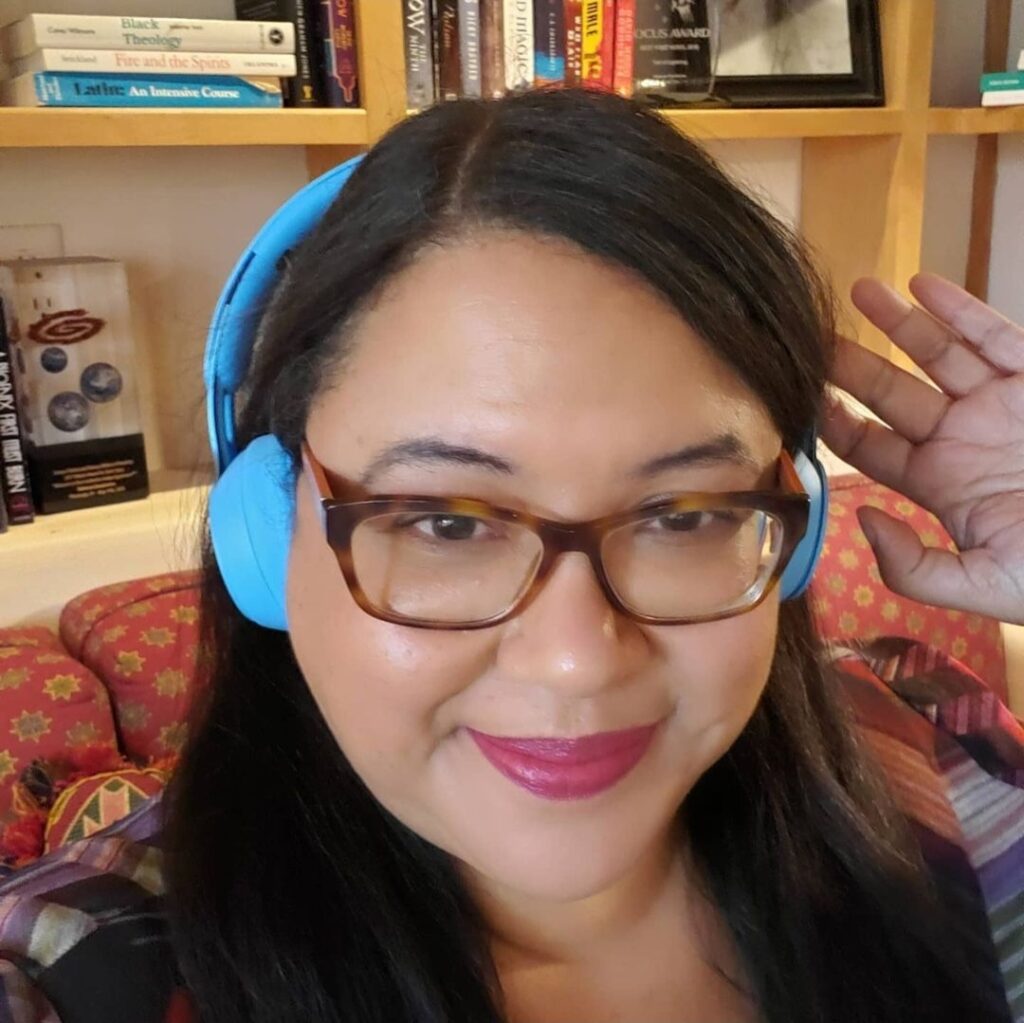Book review: “Trail of Lightning” author Rebecca Roanhorse explores Indigenous Futurism
4 min read
Rebecca Roanhorse’s “Trail of Lightning” discusses the urban fantasy genre. | @rebeccaroanhorse, Instagram.com
by BERNADETTE D’AURIA
Staff Writer
“Trail of Lightning” by Rebecca Roanhorse has got to be one of the most surprising reads of the year for me. I bought the book years ago at a used bookstore and was a bit hesitant to dive into the urban fantasy genre. However, Roanhorse was able to take the basic tropes of urban fantasy and provide an Indigenous Futurism spin on them that ultimately made her debut a compelling and unique experience unlike any that I have read before.
The novel follows the supernaturally gifted Maggie Hoskie as she attempts to survive the Sixth World, an age following the disastrous results of climate change that left most of the world engulfed by water. Because of this flooding, little land remains. The only reason Maggie survived this disaster was that great walls were magically created to protect the Navajo Nation of Dinétah. In this post-apocalyptic setting, the gods and heroes of native legend walk the land, and monsters are known to terrorize communities. Using her powers, Maggie makes it her mission to hunt down the monsters that make trouble for her and others.
The urban fantasy tropes are easy to see in this short summary. Much like “Buffy the Vampire Slayer” or “Supernatural,” you have a real-world setting that encompasses an array of monsters and larger-than-life figures, a young protagonist who has one foot in the real world and another in the world of the gods, an investigation that takes on a noir aesthetic and plenty of supernatural creatures. However, unlike other urban fantasies, Roanhorse uses the genre to explore the lasting impacts of colonialism and shapes her world in a way that fights against it. This is where the Indigenous Futurism aspect comes into play.
Indigenous Futurism is an artistic movement that explores Indigenous perspectives of the past, present and future. The term was first coined by Anishinaabe professor Grace Dillon of Portland State University in the Indigenous science fiction anthology “Walking the Clouds.”
In this anthology, Dillon states that all Indigenous Futurisms “involve discovering how personally one is affected by colonization, discarding the emotional and psychological baggage carried from its impact, and recovering ancestral traditions in order to adapt in our post–Native Apocalypse world.”
One of the most powerful lines from the novel comes from Maggie’s recollection of the first time she saw the wall that protected Dinétah. After comparing the structure to something out of the apocalypse, she thinks to herself, “But I had forgotten that the Diné had already suffered their apocalypse over a century before. This wasn’t our end. This was our rebirth.”
In this way, Roanhorse acknowledges Dillon’s statement on the post–Native Apocalypse world. By having the wall shut out the rest of the apocalypse-ridden world, there is room for rebirth and the return of tradition that takes form in the novel through the gods and heroes who have returned to Maggie’s world after remaining dormant for so long. In a world where colonialism ruled, there was no space for figures like Coyote and Neizghání. But now that the world has been destroyed—in large part because of colonialism—these figures can once again make an appearance—and they do.
Another aspect of Dillon’s definition that Roanhorse incorporates into her novel is the emotional and psychological impact that colonialism breeds through its impact. In a 2019 interview, Roanhorse discussed “the contemporary issues I wove into the story, the biggest one for me being mental health, abuse and trauma,” which are common issues that women of the Native community face.
To further inform these contemporary issues, as well as to develop the theme of community in the novel, the reader meets Maggie when she is a very isolated woman. She has essentially been traveling on her own for the better part of the year after being abandoned by her longtime mentor. In a 2018 interview with Geekly Inc, Roanhorse emphasized the importance of community and how Maggie’s lack of one is a detriment to her.
“For Natives, community is everything,” Roanhorse said. “To be isolated from or rejected by your community is to lose your identity and your way, and that’s exactly what happens to Maggie.”
Despite her lack of community and constant traveling, Maggie still longs for connection. It may not be explicitly stated early on in the narrative, but as the story unfolds and readers see Maggie’s commitment to helping others, you begin to realize just how much she cares for the people around her. Her internal conflict of not wanting to hurt or be hurt by others while still going out of her way for them is what makes her so compelling to read about. She is truly one of the most complex female protagonists I have read about this year, and I think it will be hard for any other character to take that title from her.
As written in Kirkus Reviews, Roanhorse “has given us a sharp, wonderfully dreamy, action-driven novel.” And as the first Indigenous American to win a Nebula and as a finalist for the Hugo award, nothing less could be expected from her.
“Trail of Lightning” is a thrilling, fast-paced read that is full of action, introspection and lots of traveling. If you are looking for a gripping story full of monster battling, colonialism commentary and a protagonist that is stubborn but loving, you should definitely pick this book up.


